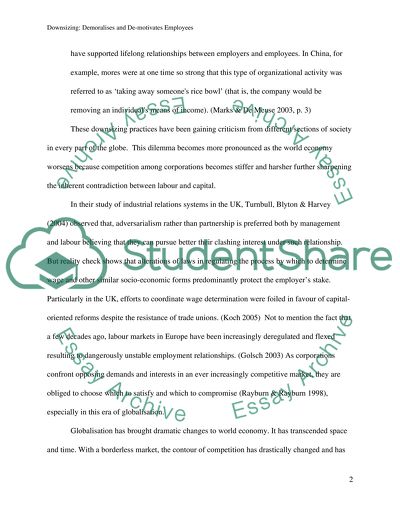Cite this document
(“Discuss the proposition that the experience of downsizing leads to the Essay”, n.d.)
Retrieved from https://studentshare.org/miscellaneous/1553207-discuss-the-proposition-that-the-experience-of-downsizing-leads-to-the-de-motivation-and-demoralisation-of-employees
Retrieved from https://studentshare.org/miscellaneous/1553207-discuss-the-proposition-that-the-experience-of-downsizing-leads-to-the-de-motivation-and-demoralisation-of-employees
(Discuss the Proposition That the Experience of Downsizing Leads to the Essay)
https://studentshare.org/miscellaneous/1553207-discuss-the-proposition-that-the-experience-of-downsizing-leads-to-the-de-motivation-and-demoralisation-of-employees.
https://studentshare.org/miscellaneous/1553207-discuss-the-proposition-that-the-experience-of-downsizing-leads-to-the-de-motivation-and-demoralisation-of-employees.
“Discuss the Proposition That the Experience of Downsizing Leads to the Essay”, n.d. https://studentshare.org/miscellaneous/1553207-discuss-the-proposition-that-the-experience-of-downsizing-leads-to-the-de-motivation-and-demoralisation-of-employees.


